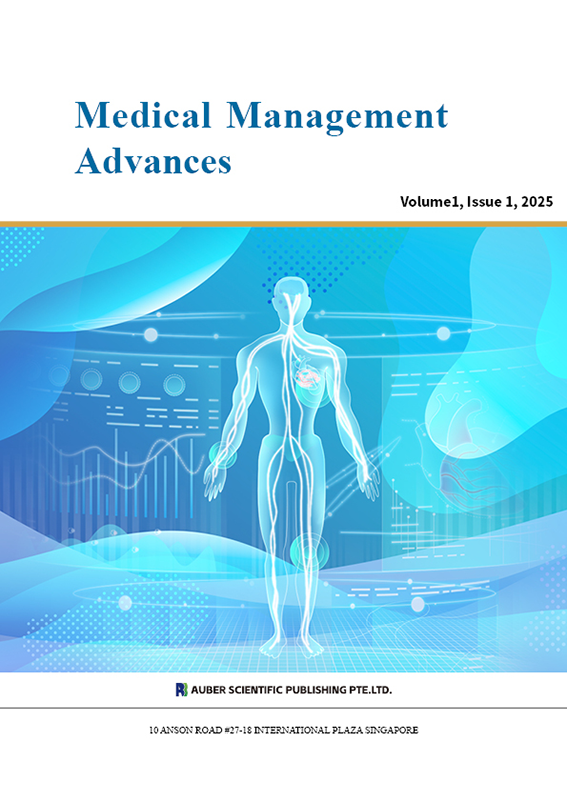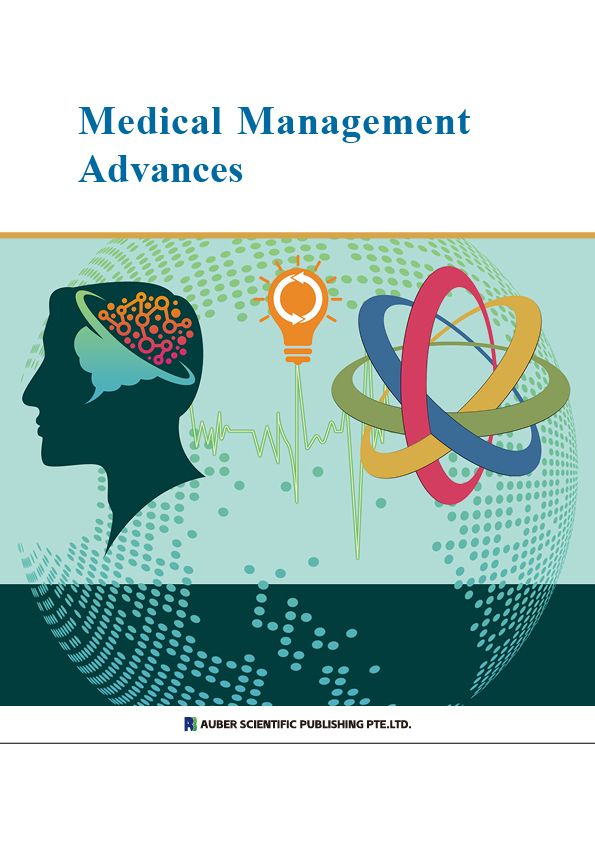Research on the causes and management strategies of medical safety adverse events
Keywords:
Medical safety; adverse events; cause analysis; strategy recommendationsAbstract
Objective: This study aims to explore the causes of medical safety adverse events in depth and propose corresponding management strategies to reduce the occurrence of similar incidents, improve the quality of healthcare services, and enhance patient safety.
Methods: A retrospective analysis was conducted to examine details of adverse events, including the department where the event occurred, the main causes, event severity levels, and the time of occurrence.
Results: Inpatient wards were found to be the primary departments where adverse events occurred, accounting for over 35% of cases, with a growing trend. The main causes of adverse events included poor doctor-patient communication, improper use of medication, unequal allocation of medical re-sources, surgical errors, and others. Among these, poor doctor-patient communication accounted for over 20% of cases, making it the most significant cause of adverse events. Furthermore, the majority of events were classified as level III and level IV, each accounting for over 30%, though level I and II events should not be overlooked. In terms of timing, adverse events primarily occurred between 1:00-4:30 AM and 7:00-10:30 PM.
Conclusion: Hospitals should strengthen the reporting mechanism for medical safety adverse events, streamline and optimize the reporting process, and establish an early warning system for such events. Additionally, a cross-departmental collaborative control structure should be implemented, with high-level leadership driving improvements. By introducing management tools and enhancing patient safety culture, these measures will help prevent the recurrence of similar incidents and improve the quality of healthcare services and patient safety.
References
[1] Guo CH, Long YC, Qiu S, et al. Analysis of the report of 2586 medical safety (adverse) events in a tertiary children's hospital [J]. Chinese Journal of Hospital Statistics, 2021, 28(4): 294-297, 304.
[2] Zhang XN, Wang L, Wang G, et al. Discussion on Quality and Improvement of Medical Device Adverse Event Monitoring Reports [J]. Chinese Journal of Pharmacovigilance, 2015, 12(8):479-482, 486.
[3] Cai Y. Application of PDCA in the Management of Safety (Adverse) Events of Medical Devices in Hospital [J]. China Medical Devices, 2018, 33(5):161-164.
[4] MIURA R , KOZAKAI R , SUZUKI S, et al. Analysis of Incident/Accident Reports in the Department of Clinical Laboratory at Tohoku Medical and Pharmaceutical University Hospital: Effect of ISO 15189 Implementation on Medical Safety:Original [J]. Laboratory Medicine International, 2024, 3(1):8-14.
[5] Zhou J, Zhao M, Dong XT, et al. Situation analysis on the adverse events monitoring of medical device in China [J]. Chinese Nursing Management, 2014, 14(1):83-85.
[6] Wan L, Yang N and Jin J. Analysis and Discussion on the Management Practice of Medical Devices Adverse Events in Hospital [J]. China Medical Devices, 2022, 37(9):134-137,141.
[7] Fernández BD, Llor SMA, Alarcón ML, et al. Health care safety incidents in paediatric emergency care [J]. Anales de pediatria, 2024, 101(1):14-20.
[8] Yang J, Zang J, Zang ZR, et al. Establishment of an internal reporting system of medical adverse events based on hospital informatization [J]. Journal of Shanghai Jiaotong University(Medical Science), 2016, 36(3):423-426.
[9] Zhang W, Xu YZ, Zhang JZ, et al. RCA2 in nurse adverse event analysis [J]. Chinese Nursing Management, 2017, 17(10):1379-1383.
[10] Qiu TY and Huang J. The concept and management status of nursing adverse events [J]. Chinese Nursing Management, 2014, 14(9):1004-1008.
[11] Chen WX, Zhang HJ and Cai LE. Economics Research of Loss Caused by Medical Adverse Events [J]. Military Medicine of Joint Logistics, 2013, 27(3):182-183,195.
[12] Eleonora M, Francesco Z, Jacopo F, et al. Nursing leadership style and error management culture: a scoping review [J]. Leadership in Health Services, 2024, 37(4):526-547.
[13] Yin JB, Wang Y, Zhang L, et al. Analysis of Adverse Events in Clinical Use of Catheter [J]. Chinese Journal of Medical Instrumentation, 2016, 40(5):369-372.
[14] Shi RF, Liu YY and Zhang ZL. The investigation of nursing adverse event monitoring and reporting in 110 tertiary hospitals of Guangdong province [J]. Chinese Nursing Management, 2015, 15(9):1098-1101.
[15] Chen CF, Peng TZ, Wang SD, et al. Construction of Medical Devices Adverse Event Management System Under JCI Assessment Standards [J]. China Medical Devices, 2017, 32(3):150-152.
[16] Zhao CP, Yuan D, Zhu PJ, et al. Study and Practice on Intellieent Classifieation of Medical Safety Ineidents Based on BERT Model [J]. Journal of Medical Informatics, 2024, 45(01):27-32,38.
[17] Sharek JP and Classen D. The Incidence of Adverse Events and Medical Error in Pediatrics [J]. The Pediatric Clinics of North America, 2006, 53(6):1067-1077.
Downloads
Published
Data Availability Statement
The data presented in this study are available on request from the corresponding author.Issue
Section
License
Copyright (c) 2025 Medical Management Advances

This work is licensed under a Creative Commons Attribution-NonCommercial 4.0 International License.


